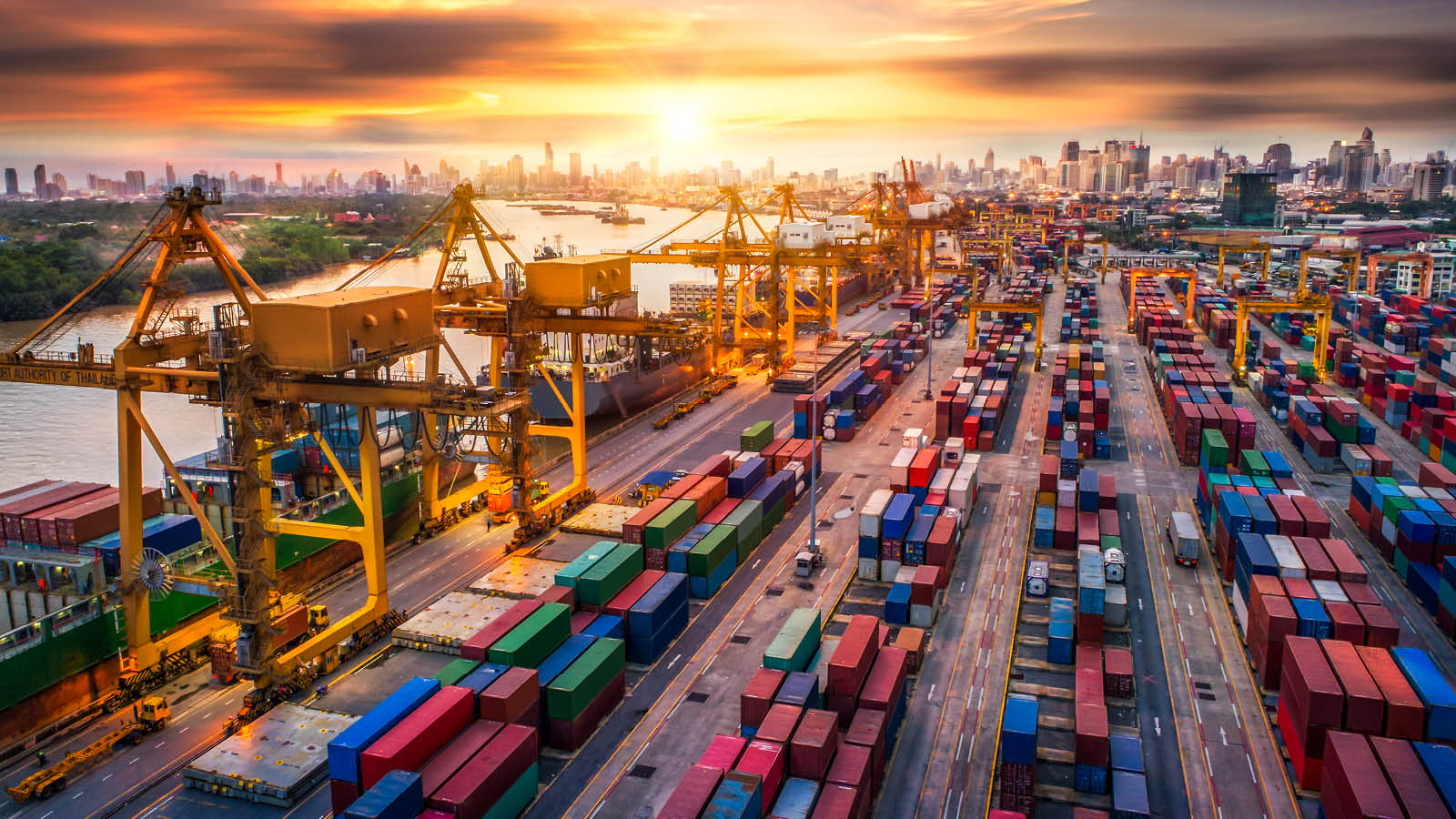Background
Events over the last 48 hours have seen an escalation in the ongoing trade war between the US and China with significant tariffs now in place on trading between both nations.
The US reciprocal tariff measures which fully took effect on the morning of 9 April were subject to a last minute announcement by President Trump suspending these measures for 90 days and applying the base rate of 10% to all countries, except for China.
Coupled with the EU finalising their package of countermeasures, due to be implemented in the coming weeks and months, the trade landscape remains fast moving and impacts of all these measures must be assessed.

The Week in Summary
In the week following President Trump’s “Liberation Day” announcement, the imposition of both 10% baseline and additional county specific tariffs came into effect from 5 April and 9 April, respectively, with US CBP beginning to collect the increased import duties at the border.
In the afternoon of 9 April, President Trump, through a post on Truth Social, announced a 90 day pause to the additional country specific tariffs, indicating that the lower rate of 10% would be applied to all countries except for China.
“Conversely, and based on the fact that more than 75 Countries have called Representatives of the United States, including the Departments of Commerce, Treasury, and the USTR, to negotiate a solution to the subjects being discussed relative to Trade, Trade Barriers, Tariffs, Currency Manipulation, and Non Monetary Tariffs, and that these Countries have not, at my strong suggestion, retaliated in any way, shape, or form against the United States, I have authorized a 90 day PAUSE, and a substantially lowered Reciprocal Tariff during this period, of 10%, also effective immediately. Thank you for your attention to this matter!”
In a further escalation of the ongoing trade war between the US and China, we have seen additional tariff measures imposed by both sides as follows:
- On 9 April, President Trump, through a post on Truth Social, announced a further 125% tariff on Chinese goods which came into effect immediately on Wednesday 9 April in retaliation to the tariffs which China was due to impose on US goods.
- Following the increase on the US side, the Chinese Office of the Tariff Commission of the State Council announced an increase in their tariff rate on US goods to 84%. These additional tariffs are due to be imposed from 10 April.
CBP Guidance
On Friday 4 April, US Customs and Border Protection (“CBP”) published a guidance document following the announcement of additional tariffs. This guidance provided clarity on a number of measures which were contained in the Executive Order, most notably;
- Duty drawback (a scheme in the US whereby a refund of import duty paid can be claimed where goods are re-exported) is allowable for these additional tariffs.
- Goods entering an FTZ during the period the additional tariffs are in place will have those tariffs imposed on them, regardless when they are released from the FTZ and what tariff rate is in place at that time.
- Goods which were “loaded onto a vessel at the port of loading and in transit on the final mode of transport” prior to April 5 2025 have been provided with a short time window, to May 26, to release goods for consumption without being subject to the additional tariffs.
- Where imported articles contain 20% or more US origin content, the additional tariffs will only be imposed on the value of the non-US content, provided supporting documentation can be obtained to support this calculation.
EU Response
In response to the announcement of additional tariffs on EU goods entering the US, EU trade ministers met for an emergency meeting on Monday 7 April in Luxembourg to discuss the bloc’s reaction and implementation of counter measures. The purpose of this meeting was to obtain agreement from the Member States on the list of products which would be subject to retaliatory tariffs in response to the recent US decision to impose tariffs on steel and aluminium.
Following a vote between European Officials on Wednesday 9 April, the final list of retaliatory measures was approved with a three stage staggered implementation, consisting of €3.9 billion of goods on 15 April, €13.5 billion of goods from mid-May and €3.5 billion of goods in December. Importantly, from an Irish perspective, US Bourbon was removed from the list of products as there were fears that the inclusion of this product may trigger a response from the US on the EU alcohol industry.
Following the last minute announcement by President Trump of the 90 day pause, it is to be determined if the EU will proceed with their retaliatory measures.
Pharmaceutical Sector
Seen as an initial positive for the pharmaceutical industry, a large number of key pharma products were noted on the exemption list and were not subject to the additional tariffs imposed by the US administration.
However, the mood music coming from President Trump and the US administration should temper this positivity somewhat as pharmaceutical products appear to still be in the crosshairs for the imposition of tariffs. On Tuesday evening, at a House Republicans fundraising gala, President Trump stated “We are going to be announcing very shortly a major tariff on pharmaceuticals” adding “Once we do that, they’re going to come rushing back into our country, because we’re the big market,” he added. “The advantage we have over everybody is that we’re the big market.”
These comments are in line with the recently published Executive Summary of the first report to the President under the America First Trade Policy review which, under Chapter 17, identifies pharmaceuticals as a possible product and sector which merit consideration for initiation of new Section 232 investigations.
Business Commentary
Danny McCoy, CEO of business group IBEC said they expect the new US tariffs will have a net overall export impact of around 2%–3% in the short-term but said the Government must advocate for a proportionate and measured EU response.
"To protect the economy and jobs we can draw on what worked in the covid and Brexit measures," he said. " The most important domestic response is to support enterprises most affected by the tariffs. This should include time-bound short-time working supports to help keep employees connected to businesses experiencing demand shocks, as well as other measures to enhance productivity and access to new markets."
Simon McKeever, CEO of the Irish Exporters Association, said: "We must recognise that the USA has fundamentally changed its economic relationship with the rest of the world and acknowledge that the landscape of global trade has essentially shifted, and the reality of long-lasting tariffs is here to stay. The tariff gap between the UK and EU further complicates the situation particularly in the case of Northern Ireland”.
The days following the announcement of President Trump's reciprocal tariff plan have seen significant volatility with the stock market, both in the US and across the World.
Key actions businesses can take today
While this remains a fast moving situation, the imposition of tariffs by the US has provided a degree of certainty with respect to the impact this will have on businesses. This certainty provides opportunity to take a number of no-regret actions which provides better clarity on the mitigation and strategic options available:
- Calculate your potential tariff exposure and assess the impacts of new tariffs on the supply chain;
- Consider short term / quick win mitigation options such as customs reliefs and transfer pricing strategies;
- Consider any short term restructuring options which will limit tariff exposure;
- Analyse and consider medium to long term strategy to understand permanency of tariffs and potential long-term supply chain restructuring;
- Consider wider business impacts beyond tariffs (corporate tax, supply chain, corporate affairs, investor relationships, M&A pipeline, working capital, customer and supplier relationships)
How we can help
Keeping up to date with the policies and tariff measures President Trump has implemented is crucial to assessing the risk to your supply chain and the impact these tariffs may have. While the exact details of EU tariffs are still to be determined, understanding your product portfolio and the impact these measures may have on your imports is an important first step. We are here to support your business with this analysis and help you navigate these choppy waters. Contact our team to discuss any aspect of this article further.
Tax Services
Driving compliance and efficiency throughout your business.
Contact us











